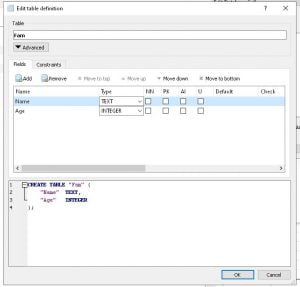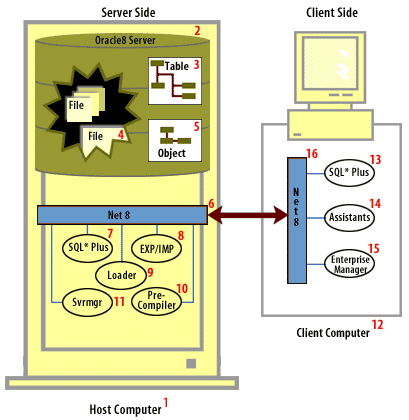
- Oracle db decode how to#
- Oracle db decode password#
This includes, search and result arguments. Yes, the maximum number of components that you can have in a DECODE function is 255. Is there a limit on the number of arguments that you can specify in one DECODE operator? I get the error message “ORA-00939: too many arguments for the function”. Using SQLAlchemy makes it possible to use any DB supported by. conSQLAlchemy connectable, str, or sqlite3 connection. You will need to create a formula that calculates a unit number for each of your ranges.ĭECODE(TRUNC ((yrs_of_service + 3) / 4), 0, 0.04, SQL query to be executed or a table name.

If yrs_of_service = 1 and 5, then return 0.06 I need to write a DECODE request that will return the following:
The formula will be evaluated at 2 if suppl_id is between 21 and 30. The formula will be evaluated as 1 if suppl_id is between 11 and 20.  The formula will score 0 if suppl_id is between 1 and 10. However, you can try to create a formula that will define one number for one range and another number for another range, and so on.ĭECODE(TRUNC ((suppl_id - 1) / 10), 0, 'cat 1', WWVFLOWCRYPTO.UNSUPPORTEDFUNCTION: The token is signed using an unsupported function. Raises VALUEERROR: The input value is invalid. Unfortunately, you cannot use the DECODE function for number ranges. Syntax FUNCTION DECODE ( pvalue IN VARCHAR2, psignaturekey IN RAW DEFAULT NULL ) RETURN ttoken Parameters Table 30-3 DECODE Function Parameters Returns A ttoken. 1-10 = ‘category 1’, 11-20 = ‘category 2’, instead of decoding each number individually. I would like to know if it is possible to use the DECODE function for number ranges, i.e. If a match is not found, then default is returned. If expression is equal to a search, then the corresponding result is returned by the Oracle Database. DECODE compares the expression to each search value one by one. One of our readers suggested using the LEAST function (instead of DECODE) as follows:Īn example with dates above can be modified as follows: In Oracle, DECODE function allows us to add procedural if-then-else logic to the query. The combination of SIGN / DECODE is also useful for digital comparisons such as bonus sales.ĭECODE(SIGN(actual-target), -1, ‘No bonuses for you’, 0, ‘Just do it’, 1, ‘Congratulations, you are the winner’) The example with the dates above can be modified as follows:ĭECODE(SIGN(date1-date2), 1, date2, date1) One of our readers suggested combining the SIGN function with the DECODE function as follows:
The formula will score 0 if suppl_id is between 1 and 10. However, you can try to create a formula that will define one number for one range and another number for another range, and so on.ĭECODE(TRUNC ((suppl_id - 1) / 10), 0, 'cat 1', WWVFLOWCRYPTO.UNSUPPORTEDFUNCTION: The token is signed using an unsupported function. Raises VALUEERROR: The input value is invalid. Unfortunately, you cannot use the DECODE function for number ranges. Syntax FUNCTION DECODE ( pvalue IN VARCHAR2, psignaturekey IN RAW DEFAULT NULL ) RETURN ttoken Parameters Table 30-3 DECODE Function Parameters Returns A ttoken. 1-10 = ‘category 1’, 11-20 = ‘category 2’, instead of decoding each number individually. I would like to know if it is possible to use the DECODE function for number ranges, i.e. If a match is not found, then default is returned. If expression is equal to a search, then the corresponding result is returned by the Oracle Database. DECODE compares the expression to each search value one by one. One of our readers suggested using the LEAST function (instead of DECODE) as follows:Īn example with dates above can be modified as follows: In Oracle, DECODE function allows us to add procedural if-then-else logic to the query. The combination of SIGN / DECODE is also useful for digital comparisons such as bonus sales.ĭECODE(SIGN(actual-target), -1, ‘No bonuses for you’, 0, ‘Just do it’, 1, ‘Congratulations, you are the winner’) The example with the dates above can be modified as follows:ĭECODE(SIGN(date1-date2), 1, date2, date1) One of our readers suggested combining the SIGN function with the DECODE function as follows: 
The formula below is 0 if date1 is greater than date2: To do so, use the DECODE function as follows:ĭECODE((date1 - date2) - ABS(date1 - date2), 0, date2, date1) Otherwise, the DECODE function should return date1.
Oracle db decode how to#
One of our readers wanted to know how to use the DECODE function to compare two dates (that is: date1 and date2), where date1 > date2, the DECODE function should return date2. The DECODE function will compare each suppl_id value, one after the other. Request using DECODE is equivalent to the IF-THEN-ELSE design. You can use the DECODE function in an SQL query as follows: DECODE in the following versions of Oracle/PLSQL Oracle 12c, Oracle 11g, Oracle 10g, Oracle 9i If no match is found, DECODE will return NULL (if no match is found). If no matches are found, the DECODE function will return the default value.
result_id – value returned if the expression coincided with the sought search.ĭefault – optional. expression_id – is an expression for comparison. Oracle/PLSQL syntax of the DECODE functionĭECODE( expression_id, search_id, result_id. Where DBMS_CRYPTO.HASH( RAWTOHEX(str), 2 /* dbms_crypto.SQL tutorial: DECODE function in Oracle Database Select chr(ascii('0') -1 + rownum) chr from dual connect by level <= 10 Select chr(ascii('a') -1 + rownum) chr from dual connect by level <= 26 Select chr(ascii('A') -1 + rownum) chr from dual connect by level <= 26 
Simple example for strings with length three: select (DBMS_CRYPTO.HASH( RAWTOHEX('Scr'), 2 /* dbms_crypto.HASH_MD5*/ )) from DUAL
Oracle db decode password#
So this is probably not the optimal way to decode password etc. the strings that map to the target hash value. about the lenght of the string, it is very easy (with some CPU power) to get all candidate strings (i.e. This is is something very different to beeing "safely decoded". it is not possible in general case to invert the function and get the unique original value. The hash function is not isomorphic, i.e.








 0 kommentar(er)
0 kommentar(er)
